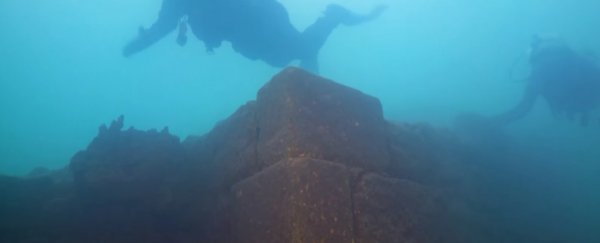Sunken cities are typically the stuff of legend, but at the end of last year archaeologists found the real thing hiding deep within Lake Van in Turkey.
After a decade of searching the Middle East's second largest lake, the home of a lost kingdom has been found hundreds of metres beneath the surface.
Archaeologists from the Van Yüzüncü Yıl University announced the incredible discovery in November 2017 - a vast 3,000-year-old castle preserved deep within the lake in amazing condition. The researchers worked closely with an independent team of divers to find their prize.
Lost underwater cities and castles are a popular motif in folklore and local legend around the world. Indeed, so are stories of ancient lost monsters hiding in deep lakes.
Tahsin Ceylan, head of the diving team on the project, first came in search of the Lake Van Monster, but uncovered a lost city instead.
"There was a rumour that there might be something under the water but most archaeologists and museum officials told us that we won't find anything," he told Daily Sabah.
The castle spans around a kilometre, with walls standing as high as 3 or 4 metres, kept in good condition by the alkaline waters of the lake.
It is, the researchers believe, an Iron Age relic of the lost Urartu civilisation, also called the Kingdom of Van, which thrived in the region from the 9th to the 6th centuries BCE.
The water level of the lake, however, has fluctuated quite dramatically over the millennia, and the researchers believe that the level was far lower at the height of the Urartian society than it is today, slowly rising over time to cover parts of the city.
Other parts of the ancient settlement are much higher, even above the current shoreline, and are the subject of ongoing archaeological study.
"Many civilisations and people had settled around Lake Van," Ceylan said.
"They named the lake the 'upper sea' and believed it had many mysterious things. With this belief in mind, we are working to reveal the lake's 'secrets'."
The work is slowly paying off. Last year the team also discovered a 4-kilometre-square field of stalagmites they call "underwater fairy chimneys" under the lake, and gravestones from the Seljuk era, some 1,000 years ago.
Earlier this year they announced the discovery of a Russian ship believed to have sunk in 1948.
The team has not been able to ascertain how deeply the walls are buried under the sediment on the lake floor, and more fieldwork under the surface of Lake Van will be required to learn more about the structure - and hopefully the people who lived within.
"It is a miracle to find this castle underwater. Archaeologists will come here to examine the castle's history and provide information on it," Ceylan said.
"We have detected the castle's exact location and photographed it and have made progress in our research. We now believe we have discovered a new area for archaeologists and historians to study."
A version of this article was first published in November 2017.
